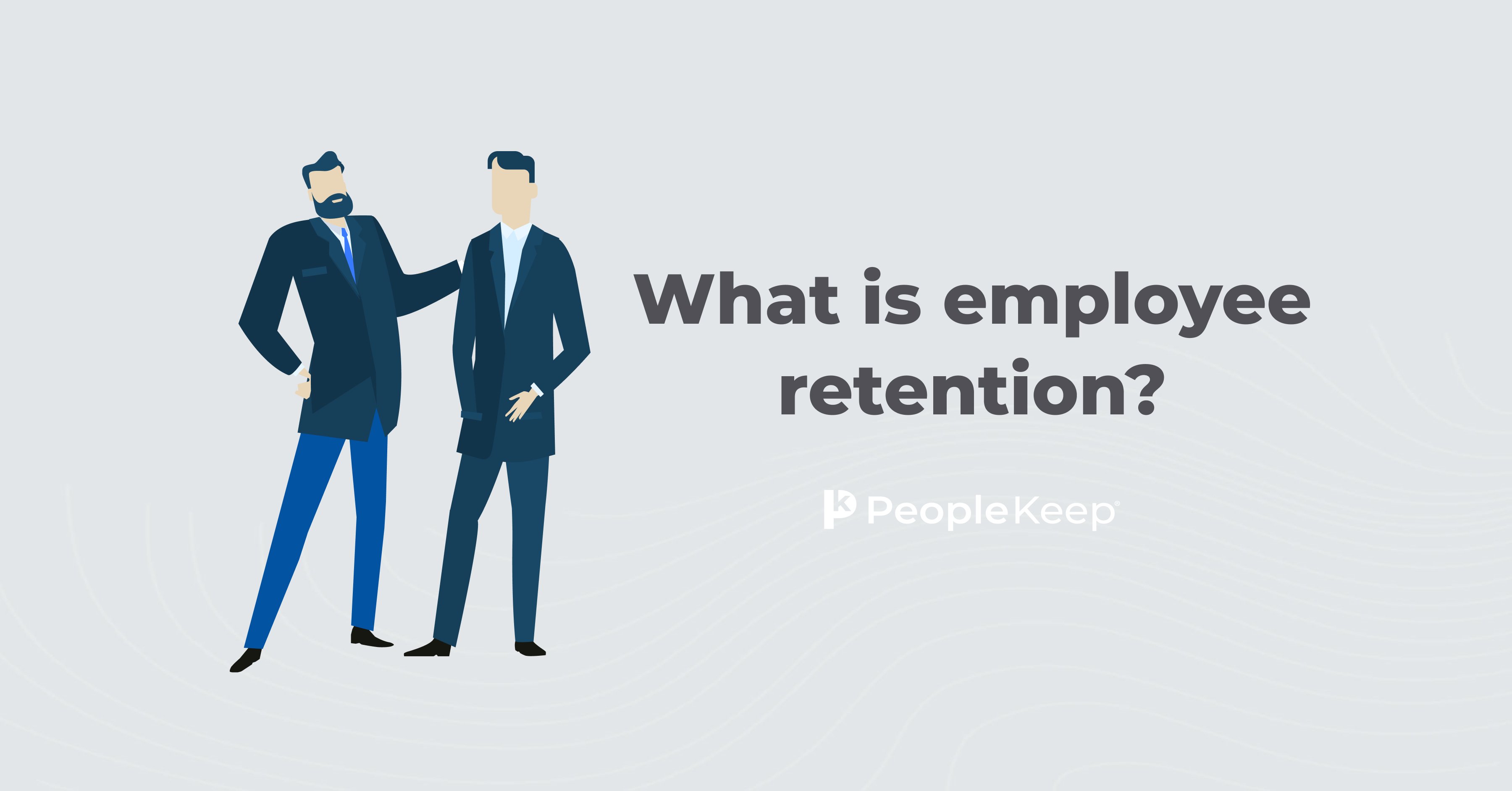Employee retention: The real cost of losing an employee
By Holly Bengfort on December 15, 2025 at 9:00 AM
Attracting and retaining talented people is vital for an organization's success. Employers need to invest in an effective recruitment process and retention strategies to thrive in today's economy. But, finding and keeping the best employees is especially challenging for small businesses and nonprofit organizations, which must compete with larger companies and budgets for top talent.
In this article, we'll cover the effects of employee turnover and strategies you can use to prevent it. We'll also look at employee turnover costs.
In this blog post, you’ll learn:
- How employee turnover rates affect your organization’s productivity, morale, and bottom line.
- What drives employees to leave, and why the actual cost of replacing a worker is often higher than expected.
- Practical strategies to improve retention, such as offering meaningful benefits, strengthening company culture, and supporting employee well-being.
What is employee turnover?
Employee turnover occurs when an employee leaves a company or organization. This can be for any reason, including quitting for better job opportunities, retirement, or termination. An employee turnover rate measures the number of employees who leave the organization in a specific time period.
There are two types of employee turnover: voluntary turnover and involuntary turnover. Voluntary turnover is when an employee chooses to leave the organization. In contrast, involuntary turnover occurs when an employer terminates an employee.
Why does employee turnover matter?
According to the Bureau of Labor Statistics, the number of U.S. employees who voluntarily left their jobs in August 2025 was 3.1 million1. While this number is lower than it was during the peak of the Great Resignation in November 2021 (4.5 million workers), many employees continue to leave their jobs voluntarily.
Frequent voluntary quit rates like these hurt your organization in multiple ways. Chris Estrada is the CEO of Nationwide United Auto Transport. With over 20 years of management experience, he’s confronted the challenge of losing key employees.
"When an essential team member departs, it's not just the intimate knowledge of our workflow we lose," Estrada said. "We also face a decrease in productivity and employee morale until a fitting replacement is found."
Losing employees decreases productivity, lowers morale for remaining staff, and leads to expensive replacement costs. We’ll look closer at these realities in the following sections.
Employee turnover decreases productivity.
Losing employees can decrease productivity simply because you have fewer team members to complete tasks. As the remaining employees get overwhelmed with more work to help make up the difference, their stress levels rise. This makes them far less likely to perform at their best. Overworking your remaining employees can also lead to further turnover.
"Recruiting the right talent may take anywhere from one to four months, depending on the role's complexity," Estrada said. "The delay, coupled with the costs, can put an enormous strain on remaining team members, as they may need to shoulder additional responsibilities."
This kind of hit on your employees' productivity can also be a financial blow to your organization. Gallup’s State of the Global Workplace Report found that lost productivity cost the global economy $438 billion in 20242.
Employee turnover lowers morale.
One of the first impacts of turnover you'll notice is a decrease in employee morale. As more workers leave, the ones remaining may have lost a valuable work friend, which matters more than you might think.
"Preserving the company's culture during this transition is crucial -- it's one of our key focus areas when someone leaves, with a direct impact on hiring and retention strategy," Estrada said.
According to a study by KPMG, 83% of employees say having a friend at work helps them feel more engaged. Moreover, 78% of employees reported that close work friendships have a positive impact on their mental health3. So if one employee leaves, it can severely affect the culture and commitment your remaining employees have to the company and their role.
Additionally, employees will ask questions about why their coworkers are leaving. They may also reflect on the reasons why, which can further damage morale and your culture.
The costs of turnover are high.
Perhaps the biggest concern that employee turnover presents is the financial cost of recruiting and training new employees to replace those who have left. While employee turnover costs vary, there's no question that it's something employers need to manage.
The average cost of turnover per employee can be tens of thousands of dollars. SHRM estimated that every time a business replaces an employee, it costs between 50% and 200% of their annual salary4. For an employee making $60,000 a year, that's $30,000 to $180,000 in recruiting and training expenses.
However, replacement costs vary depending on the wage and role of the employee. It often costs more to replace an executive-level position than an entry-level role.
For example, some report the average costs to replace an employee are5:
- 200% of a leader or manager’s annual salary
- 80% of an employee's annual salary for technical positions
- 40% of their salary for frontline workers
What is the true cost of losing an employee?
In an article on employee retention, Josh Bersin of Deloitte breaks down key factors that contribute to the true cost of losing an employee6.
These factors include:
- Recruitment costs: This includes the direct costs of hiring a new employee, such as posting on job boards, social media ads, candidate selection, interviewing, and screening.
- Onboarding costs: The cost of your onboarding process, including training replacements, management time, and necessary HR software.
- Lost productivity: It may take a new hire one to two years to reach the productivity of an existing employee, resulting in indirect costs to your organization.
- Lost engagement and impact on employee morale: Other employees who see high turnover tend to disengage and experience a decline in productivity, ultimately affecting team morale.
- Customer support and errors: New employees tend to take longer to complete their work and are often less skilled at resolving problems, which can create a short-term business challenge.
- Training costs: According to workforce data, in 2024, it cost $874 a year to train one U.S. employee7. If your company is growing rapidly, resulting in the hiring of 20 workers, your annual employee training costs can exceed $17,000.
- Lost institutional knowledge: When highly-skilled or longtime employees leave, your organization loses some institutional knowledge, which is the combined skill set and experience of your business.
- Cultural impact: Whenever someone leaves, others take time to ask why. Additionally, there may be a customer impact on your business if your turnover rate affects your staffing amounts.
One of the reasons the real cost of employee turnover is such a mystery is that most organizations lack systems in place to track exit costs, including recruiting, interviewing, hiring, orientation and training, lost productivity, potential customer dissatisfaction, reduced or lost business, administrative costs, and lost expertise.
Calculating this for all employees to determine the total annual cost requires collaboration among departments (HR, finance, operations, etc.), tools to measure these costs, and effective reporting mechanisms.
Why do employees quit?
There are many reasons why an employee might leave their current role.
Some of the top reasons for employee turnover are:
- Lack of career or growth opportunities
- Lack of employee engagement
- Poor company culture
- Poor employee benefits and annual compensation
- Disagreements with coworkers or management
- No clear business goals or direction
- Employees feel like their employers don’t consider their honest feedback or thoughts
Gallup surveyed more than 10,000 U.S. employees. According to study results, the top four motivators causing employees to seek new employment are work-life balance and personal wellbeing, pay or benefits, stability and job security, and a job that allows them to do what they do best8.
Employee retention strategies
So, what can you do to improve employee retention and reduce turnover costs? We've compiled some employee retention tips in the following sections.
Offer a quality health benefit
Offering health benefits is an effective way to boost employee retention. Today’s workers frequently cite health benefits as one of the most desired employee benefits.
According to our 2024 Employee Benefits Survey Report, 92% of employees surveyed said they value health benefits, and 91% of employees value dental insurance. Overall, 59% of employees use their employer-sponsored health benefits, with 76% of employers seeing the highest participation in these benefits. However, not all health benefits are created equal.
Traditional group health insurance is a common option for many organizations. But rising healthcare costs are making it unaffordable for many small to midsize organizations. Additionally, these plans force employees into networks that may not meet their individual needs.
A stand-alone health reimbursement arrangement (HRA) is a popular option among organizations for its flexibility and lower costs. An HRA allows you to reimburse your employees tax-free for their qualifying medical expenses, such as individual health insurance premiums and out-of-pocket costs.
HRAs are more cost-effective and flexible than traditional health plans because employers can offer a monthly allowance that fits their budget. If your employees don’t use their total allowance at the end of the year, you can keep the remaining funds, contributing to even greater savings.
With an HRA, your organization can say “goodbye” to tough minimum participation requirements and annual rate hikes that come with group plans.
The most popular types of HRAs are:
- The individual coverage HRA (ICHRA). Available to employers of any size, this option allows you to set any allowance amount you choose and tailor eligibility or reimbursement levels based on age, family status, or employee class. An ICHRA can also meet ACA employer mandate requirements for applicable large employers (ALEs) as long as participating employees have qualifying individual health coverage and the allowance meets affordability rules.
- The qualified small employer HRA (QSEHRA). Designed for businesses with fewer than full-time equivalent employees (FTEs) that don’t offer a group health plan or supplemental coverage. You must include full-time employees. However, you may extend the benefit to part-time staff if everyone receives the same allowance. Employees can use the QSEHRA if they enroll in a health plan that provides minimum essential coverage (MEC).
You can also offer your employees a taxable health stipend. This benefit works similarly to an HRA but has fewer regulations and restrictions on which expenses you can reimburse. While an HRA is often a better option, a stipend is excellent for organizations that want to offer a benefit to international employees, 1099 contractors, and those with advance premium tax credits (APTC).
Offer an array of perks and benefits
In addition to health benefits, be sure to offer your employees a wide range of benefits and perks to ensure you’re meeting their unique needs. Providing benefits improves employee satisfaction, which in turn lowers voluntary turnover rates.
According to our 2024 Employee Benefits Survey Report, some of the most-valued benefits include:
- Paid time off (PTO)
- Retirement benefits
- Vision insurance
- Childcare benefits
- Life insurance
- Paid family leave
You can also offer your staff stipends to help them pay for various types of expenses that are important to them. These taxable benefits allow you to easily reimburse employees for expenses such as health, wellness, hybrid or remote work, transportation, and education costs.
Wellness stipends are a great place to start. Building a holistic employee wellness program helps boost employee engagement and productivity while addressing the health needs that traditional benefits don't cover.
With a wellness stipend, you can reimburse your employees for:
- Gym memberships
- Fitness classes
- Wearables and devices
- Home exercise equipment
- Meditation apps
Benchmark your employee retention rates
Another way to reduce the costs of employee turnover is to benchmark your employee retention rate. By understanding how many of your employees are staying at your organization over a specific period, you'll be able to better work on methods to retain those who are likely to leave.
Use proven retention strategies, not guesswork.
There are many proven ways to improve retention and minimize turnover.
Here are a few ideas:
- Hire the right employees the first time
- First, identify your ideal employee and determine how to convince them to apply. Then, update your hiring process and job description to reflect this.
- Identify the perks and benefits your employees want
- Set clear goals and expectations for your employees
- Optimize your employee onboarding process for long-term success
- Offer various career development opportunities with the possibility for internal transfers and promotions
- If your current employees feel stagnant in their roles, they'll look for new job opportunities elsewhere.
- Create and maintain a positive company culture
- Be transparent about performance metrics
- Recognize employees for their work
- Be transparent about performance metrics and award employees for their good work. This can be as simple as regularly thanking your staff or investing in employee recognition programs and activities.
- Keep open lines of communication with your employees
- Provide regular feedback to your employees and welcome it from them in return.
Don't assume that every employee experience is positive
A mistake some organizations make is assuming their current workers are happy. By fostering a high-feedback work environment, you'll be able to see how employees feel about your organization. This will allow you to take action to improve areas that are lacking.
It's also a good idea to conduct stay interviews with your employees to ensure your company is meeting their needs and goals before they consider leaving your organization.
Conduct employee exit surveys
While you don't want to see your key employees leave, you can learn a lot through employee departures. Be sure to conduct an exit interview or employee surveys as part of your standard HR processes. This will help you identify the reason your employees leave for other opportunities.
Conclusion
When an employee leaves your company, it can be a big blow to your organization's morale and productivity. However, a high annual turnover rate can also cost you valuable time and money. That's why implementing strong retention strategies from the beginning is crucial, including offering quality benefits to take care of your employees.
Offering a health benefit is a great place to start if you want to improve your retention rate. With a personalized HRA through PeopleKeep by Remodel Health, we can help businesses of any company size better support their employees' health, enhancing satisfaction and reducing turnover. Contact us today to learn more about how an HRA is right for your organization!
This blog article was originally published on June 2, 2020. It was last updated on December 15, 2025.
- Job Openings and Labor Turnover Summary
- State of the Global Workplace 2025
- KPMG Survey: Workplace Friendships Play a Critical Role in Employee Mental Health, Job Satisfaction
- The Myth of Replaceability: Preparing for the Loss of Key Employees
- 42% of Employee Turnover Is Preventable but Often Ignored
- By The Numbers: The True Cost of Employee Turnover
- How Much Do Companies Spend on Training Employees?
- The Top Four Reasons for Taking a New Job
Check out more resources
See these related articles

How your employee benefits package can foster inclusivity
Discover how an inclusive benefits package can foster workplace inclusivity. Learn which benefits support diversity and meet employee needs.

What is employee retention?
Employee retention refers to a company's ability to keep its workforce over time. Explore its importance, challenges, and ways to improve it.

Five tips to start offering employees health benefits
Learn five essential tips for offering health plans for employees. Discover how to choose the right benefits to attract and retain top talent.




